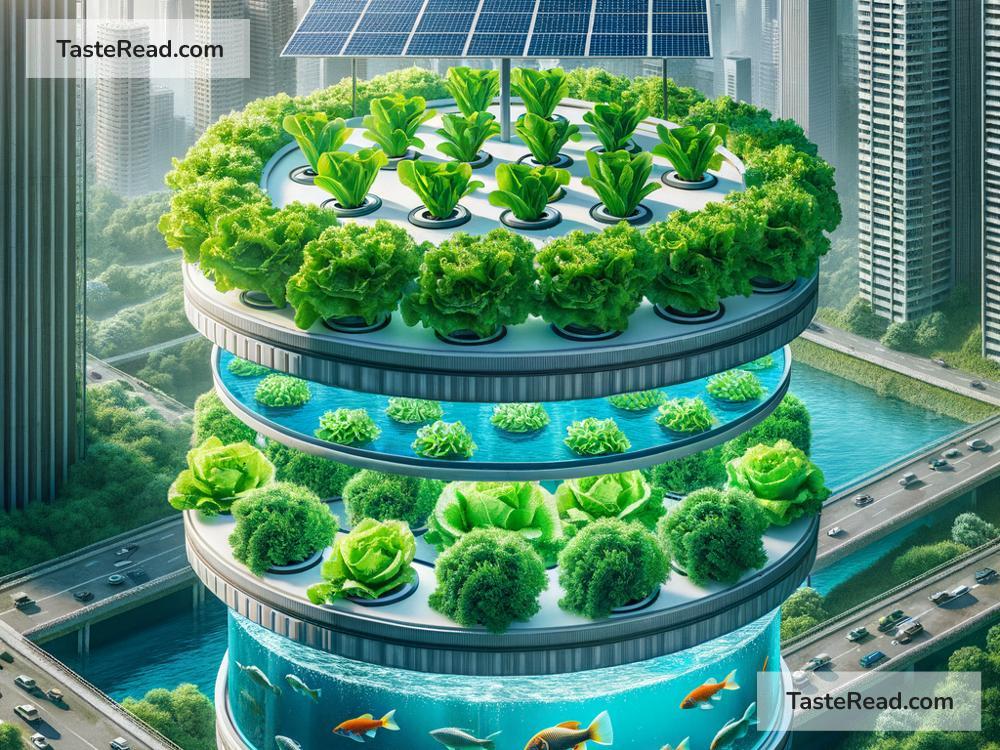Aquaponics: A Smart Solution for Future Food Systems
In a rapidly changing world, where the population is growing and natural resources are dwindling, finding sustainable ways to produce food is essential. One such solution is aquaponics—a clever system combining fish farming (aquaculture) and plant growing (hydroponics) into one efficient, eco-friendly process. This innovative approach could play a big role in ensuring food security in the future. Let’s explore what aquaponics is, how it works, and why it could be a key part of food systems in the years to come.
What Is Aquaponics?
Aquaponics is a method of farming that mimics nature. It creates a closed-loop system where fish and plants grow together, helping each other thrive. Here’s the basic idea: fish live in tanks and produce waste. This waste contains nutrients that are beneficial for plants. Instead of letting the waste go to waste, it’s used to fertilize the plants. In return, the plants clean the water for the fish.
The process works because of beneficial bacteria. These bacteria turn fish waste into nutrients (like nitrates) that plants can absorb. The water then cycles back to the fish tank, clean and ready for the fish.
Why Is Aquaponics Important?
Aquaponics is important because it solves many challenges we face in farming today. Traditional farming methods use a lot of land, water, and chemical fertilizers, which can harm the environment. Aquaponics, on the other hand, offers a more sustainable way to grow food.
Here are some reasons aquaponics stands out:
-
Uses Less Water
Aquaponics uses up to 90% less water than traditional soil farming. Since water is recirculated in the system, very little is wasted. This makes aquaponics ideal for areas with water shortages or dry climates. -
No Chemical Fertilizers Needed
The fish provide all the nutrients plants need, so there’s no need for chemical fertilizers. This reduces pollution and makes the food healthier and more natural. -
Produces Food Year-Round
Aquaponics systems can be set up indoors or in greenhouses, allowing farmers to grow food in any season. It’s a reliable way to produce fresh fruits, vegetables, and fish all year long. -
Saves Space
Aquaponics systems don’t need a lot of space. They can be built vertically or in small areas, making them perfect for urban environments and places where land is limited. -
Supports Biodiversity
Aquaponics allows farmers to grow a variety of crops and raise different types of fish. This diversity helps keep ecosystems healthy and offers a more balanced food supply.
How Aquaponics Could Shape Future Food Systems
The way we grow food needs to adapt to meet future challenges: more people, less land, and changing climates. Aquaponics offers solutions to these problems and could become a key part of how the world produces food.
1. Urban Farming
By 2050, two-thirds of the world’s population will live in cities. Urban areas often lack space for traditional farming, but aquaponics can be done in small, indoor setups. Rooftop gardens, abandoned warehouses, and even schools can host aquaponics systems. This means fresh food can be grown right where people live, reducing transportation costs and carbon emissions.
2. Climate Resilience
Climate change is making farming harder. Droughts, floods, and unpredictable weather are affecting crop production. Aquaponics systems are climate-controlled, so they’re not affected by outdoor conditions. They can thrive in regions where farming has become difficult due to climate change.
3. Local Food Security
Aquaponics empowers communities to produce their own food. Instead of relying on imported food, people can grow what they need locally. This reduces dependency on long supply chains, which are vulnerable to disruptions like pandemics or conflicts.
4. Education and Innovation
Aquaponics also has educational benefits. Schools, universities, and community programs can use it to teach people about sustainable farming, biology, and environmental science. As more people learn about aquaponics, they may develop even better systems to improve food production.
Challenges and Potential
Although aquaponics has many benefits, it’s not without challenges. The initial setup can be expensive, as building tanks, pumps, and grow beds requires investment. Aquaponics also requires knowledge and careful management to keep the fish and plants healthy, especially for beginners. However, as technology advances, costs are expected to come down, and training materials are becoming more accessible.
Governments, businesses, and communities all have an important role in supporting aquaponics. By funding research, creating policies, and encouraging local projects, they can help aquaponics become mainstream.
Conclusion
Aquaponics is a smart, sustainable way to grow food that mimics nature’s balance. By using less water, saving space, and avoiding harmful chemicals, it offers solutions to many of the problems we face in agriculture today. As cities grow, climates change, and the demand for food increases, aquaponics could play a big role in feeding the world responsibly.
The future food system must be sustainable, efficient, and adaptable, and aquaponics checks all these boxes. Whether in city rooftops or rural communities, aquaponics has the potential to revolutionize how we grow food—making farming better for the planet and helping ensure everyone has access to fresh, healthy meals.
So, maybe the farm of tomorrow won’t be in a field—it will be in tanks and grow beds, working in harmony. Aquaponics is not just a science; it’s a vision for a brighter, greener future.


